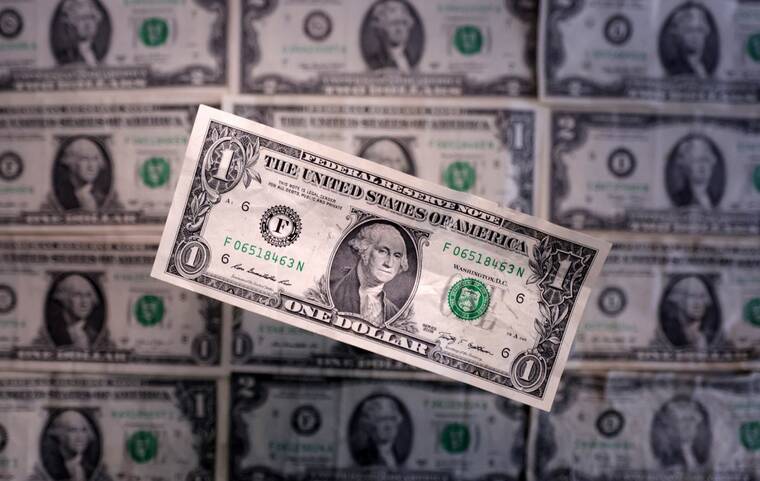Dollar unmoored as traders unsure on tariffs

REUTERS/DADO RUVIC/ILLUSTRATION/FILE PHOTO
Dollar banknotes are seen in this illustration on March 19. The dollar took a breather on Wednesday, with weak U.S. confidence data and concerns about the effect of sweeping tariffs on U.S. growth putting the brakes on a recent bounce.
SINGAPORE >> The dollar took a breather on Wednesday, with weak U.S. confidence data and concerns about the effect of sweeping tariffs on U.S. growth putting the brakes on a recent bounce.
The dollar reversed by about 0.5% on the yen overnight, crossing below 150 yen to sit at 149.95 early in the Asia session. The euro, which spent a week edging lower from a five-month high, has now steadied at $1.0789.
The euro and Russia’s rouble had no immediate reaction to U.S. deals with Russia and Ukraine to pause attacks at sea and on energy targets, though wheat prices fell as the U.S. said it will push to lift sanctions on Russian agriculture.
Nerves are focused on next week, when U.S. President Donald Trump has threatened to impose – or at least provide details of – a messy round of tariffs on autos, chips and pharmaceuticals.
The trade-sensitive Australian dollar hovered just above 63 cents ahead of monthly inflation data that is likely to be sticky and to reinforce bets the central bank will be in no rush to cut interest rates.
The Aussie had little reaction to Tuesday’s federal budget, which promised tax cuts and extra borrowing to fund relief measures for voters ahead of a May election.
Don't miss out on what's happening!
Stay in touch with breaking news, as it happens, conveniently in your email inbox. It's FREE!
“The major driver of AUD/USD over the next few weeks, and possibly months, will be the new U.S. trade policy and the response from foreign governments,” said Commonwealth Bank of Australia strategist Joe Capurso.
“If market participants are caught flat footed by larger than expected U.S. tariffs and retaliation by other governments next week, AUD/USD can test $0.60 in coming weeks.”
The New Zealand dollar was steady at $0.5732.
Tariffs and threats of the duties have already driven counterintuitive moves in currency markets as concerns they may drive down U.S. growth have confounded the assumption that the levies should be inflationary and drive up the dollar.
Overnight data showing U.S. consumer confidence plunged to the lowest level in more than four years in March highlighted how the uncertainty is weighing heavily on households.
For the quarter, the dollar index, which had rallied strongly between September and January, is headed for a roughly 4% drop.
Sterling held steady at $1.2948 ahead of British inflation data and a budget update due later in the day.




